Israel, Ripper & Zimbabwe: On Saturday 14th October 2017 I began work in Mayfair where a protest calling for a restaurant owner and chef not to break the cultural boycott of Israel was opposed by Zionists before going to Cable Street for a protest at the Ripper ‘Museum’ and ending at a celebration of 15 years of the Zimbabwe Embassy vigil.
Little Social don’t break the cultural boycott – Mayfair
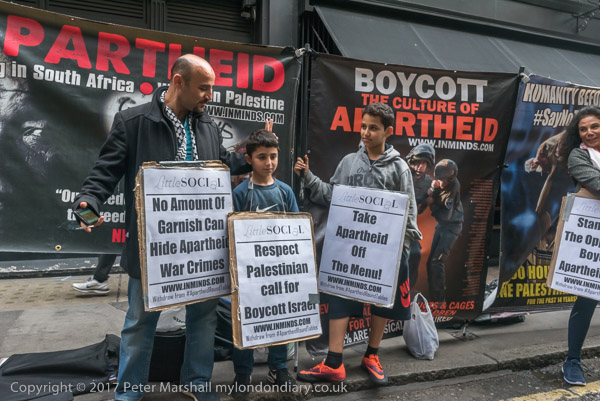
The owner of the Little Social Restuarant and his head chef were going to take part in the Brand Israel culinary event ‘Round Tables’ in Tel Aviv in November 2017 and human rights group Inminds had come to plead with them not to break the Palestinian call for a cultural boycott of Israel.
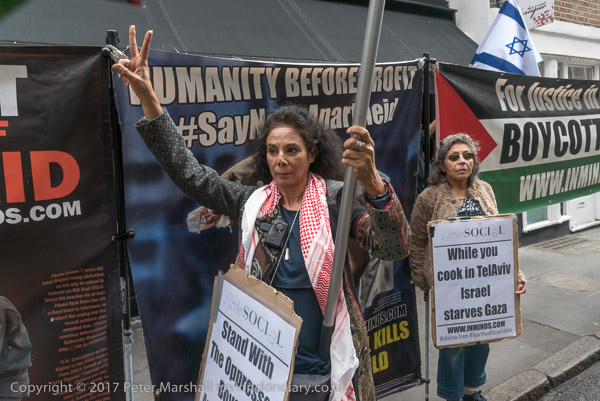
Events such as these are a part of the Israeli government’s Public Relations efforts to distract from its policies of occupation and apartheid. The event was sponsored by Dan Hotels who have a branch built on stolen Palestinian land in occupied East Jerusalem.
Police arrived and talked with the protesters who included several Palestinians and Jews. They assured police they would do nothing illegal, and continued getting out their flags and banners.
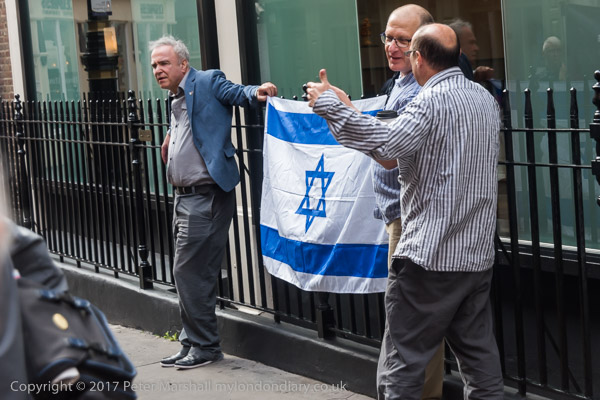
A few people arrived to put on a counter-protest. One man assured me that everything the people protesting in support of Palestine said and had on their banners was lies, and tried to justify all of Israel’s actions, including the then recent attacks on Gaza. He tried to talk with the protesters but they told him they were not interested in hearing his lies.
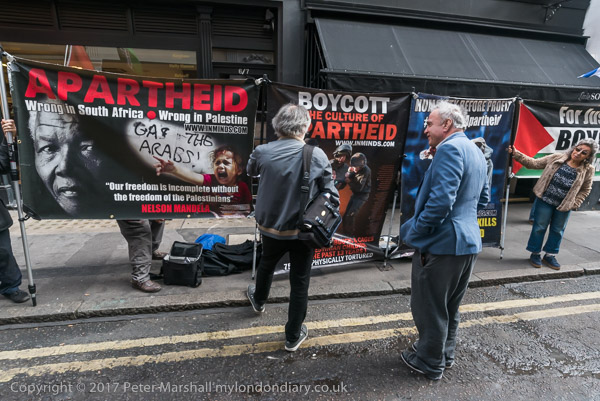
I told him how my friend had been attacked by settlers in Palestine and who came and stole the olives from the farm – and that Israel’s attacks on Gaza were entirely disproportionate to the rocket attacks on Israel which he said provoked and claimed justified them, and that Israel should respect the United Nations resolutions. He continued to blame the Palestinians for everything and later I was defamed as “a noted anti-Semitic photographer” in a report on this event for my coverage of and other protests over Palestine and by the “wrong type of Jews.”
Little Social don’t break the cultural boycott.
Class War return to Ripper “Museum” – Cable Street
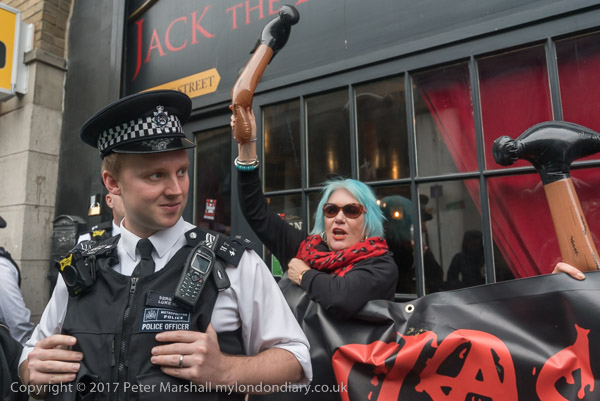
Class War returned with London 4th Wave Feminists to protest peacefuly outside the so-called “museum’ in Cable St displaying exhibits glorifying the brutal series of 19th century murders and exhibiting materials relating to the horrific deaths of working class women.

They came after Tower Hamlets council had failed to enforce the planning decisions against the shop, only given planning permission under the false pretence it would celebrate the history of women in the East End.

They stood with their ‘Womens Death Brigade‘ banner on the pavement in front of the tourist shop and symbolically attacked it and its illegal metal shutters and signage with plastic inflatable hammers.
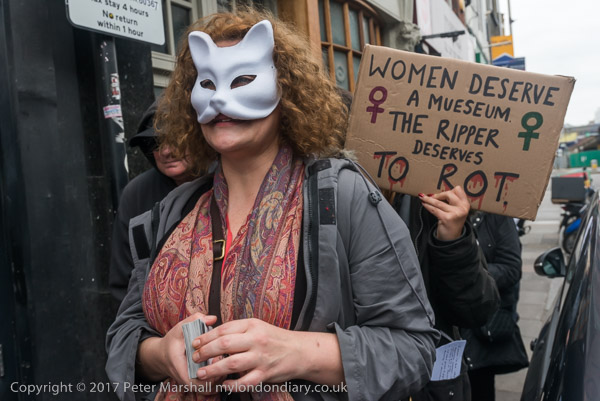
Police led in a few tourists who had come to visit the shop past the protesters, who refused to move away. Some went away after talking when they heard why people were protesting about the exhibition, and others who went inside came out and told them that they thought the “museum’s” publicity was misleading and they had been very disappointed by the display.
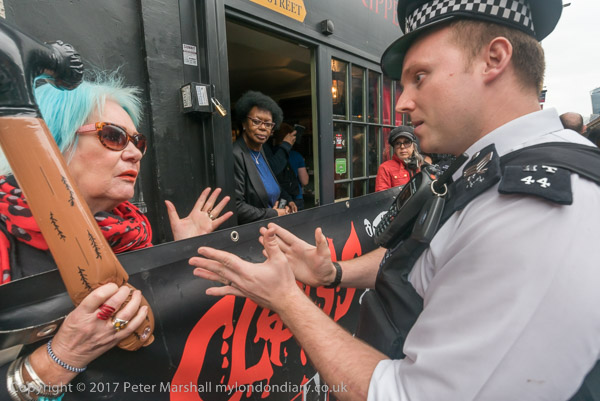
Not much is known about some of the victims, but they were all women struggling to make a living, some with dependents. People from some of their families still live in London and are disgusted at the displays in this tourist attraction.
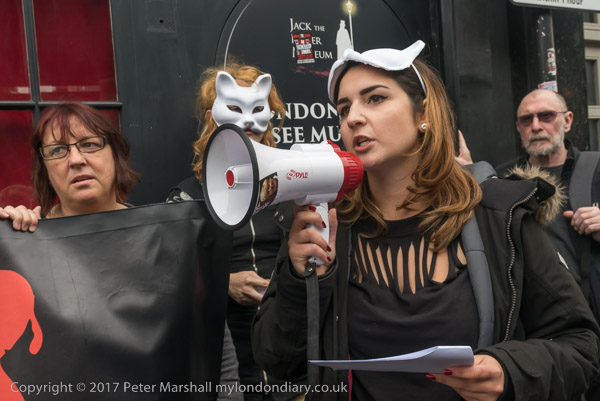
One of the 4th Wave Feminists read a message from a member of one of those families, complaining about the voyeuristic exploitation of her ancestor in the displays. We were told was known about the unfortunate victims, reminding us that they were real people and should not be exploited in this way by a toruist rip-off.
More pictures at Class War return to Ripper “Museum”
Zimbabwe democracy vigil celebrates 15 years – Zimbabwe Embassy, Strand
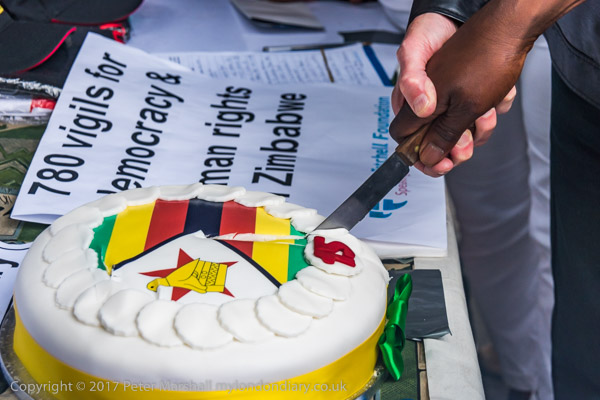
The first weekly vigil was held on 12th October 2002 and there have been around 780 every Saturday since then.
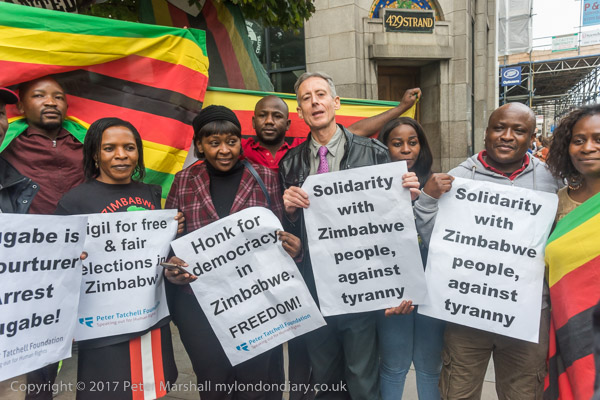
They intend to continue to protest until there are free and fair elections and an end the human rights abuses of the Mugabe regime. Their vigils are in solidarity with courageous and inspiring human rights defenders in Zimbabwe who risk life and liberty to demand democracy, human rights and the rule of law.
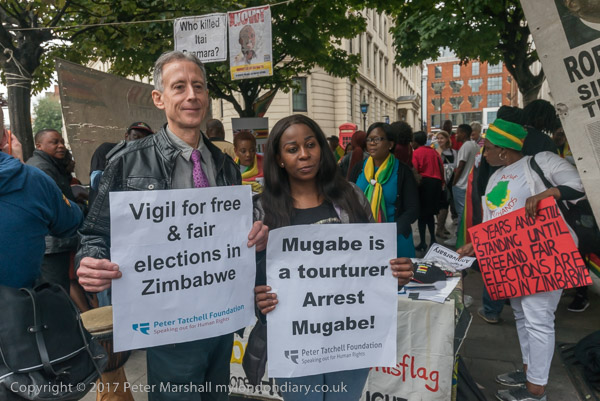
Among those present were a number who had been at that first vigil, including human rights activist Peter Tatchell who was badly beaten when he attempted a citizen’s arrest on Mugabe in Brussels in 2001. He cut the celebratory cake with others from the vigil.
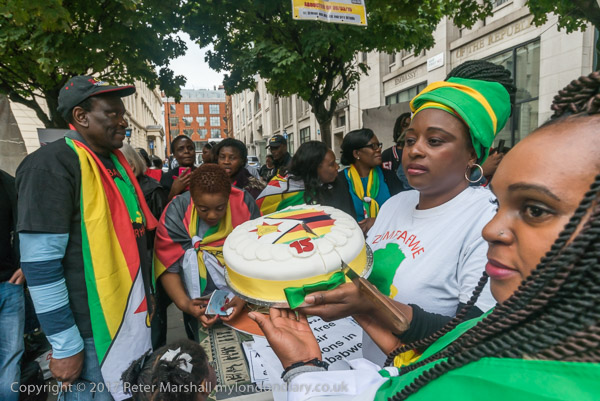
Since then Mugabe has gone but the human rights situation in Zimbabwe is still dire and vigils continue, now both virtually and twice monthly in person. It “will continue until internationally-monitored, free and fair elections are held in Zimbabwe.”
Zimbabwe vigil celebrates 15 years
Flickr – Facebook – My London Diary – Hull Photos – Lea Valley – Paris
London’s Industrial Heritage – London Photos
All photographs on this page are copyright © Peter Marshall.
Contact me to buy prints or licence to reproduce.







